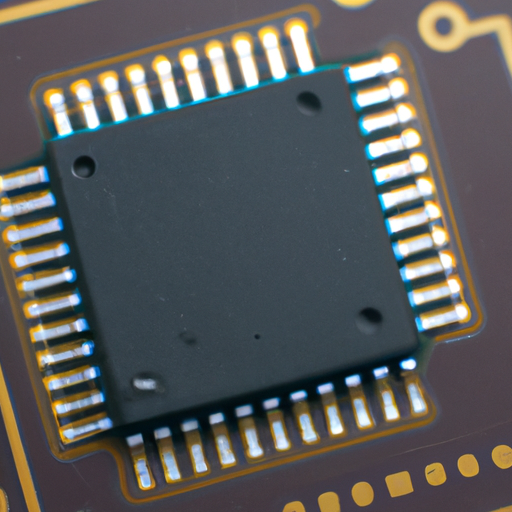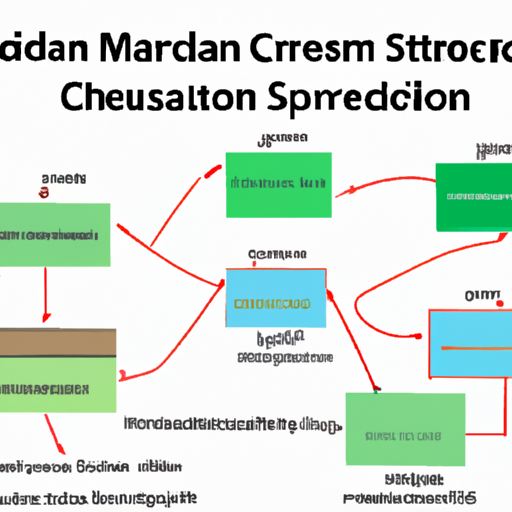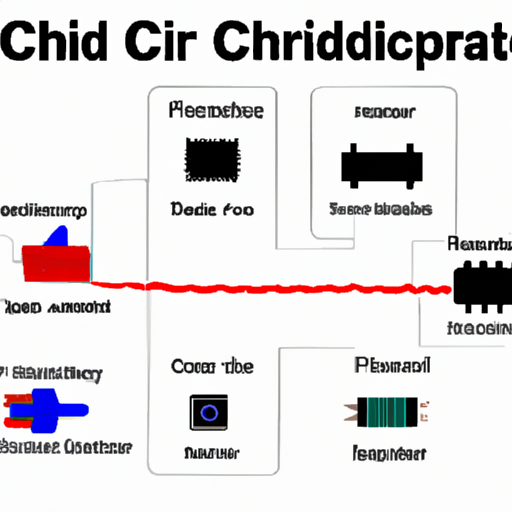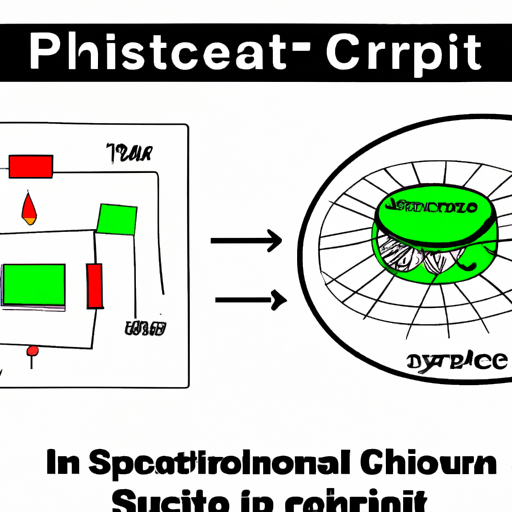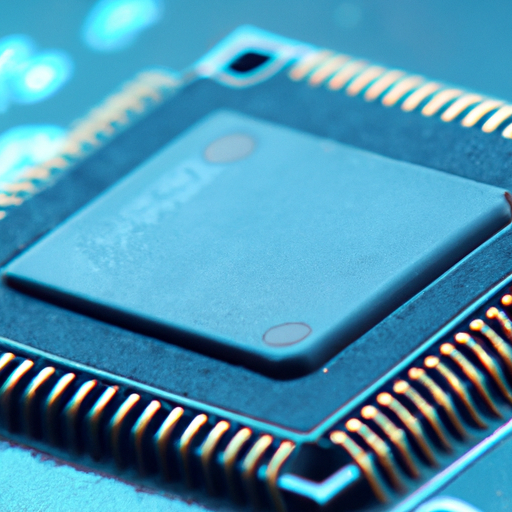Features of Integrated Circuits and Their Advantages
I. Introduction
Integrated Circuits (ICs) have revolutionized the world of electronics since their inception in the late 1950s. Defined as a set of electronic circuits on a small flat piece (or "chip") of semiconductor material, typically silicon, ICs have become the backbone of modern electronic devices. Their evolution from simple transistor circuits to complex microprocessors has paved the way for advancements in technology that we often take for granted today. The importance of ICs in modern technology cannot be overstated; they are integral to everything from consumer electronics to industrial automation, making our lives more efficient and connected.
II. Features of Integrated Circuits
A. Miniaturization
One of the most significant features of integrated circuits is their ability to miniaturize electronic components. The size reduction and compact design of ICs allow for the creation of smaller, more portable electronic devices. This miniaturization has led to the development of smartphones, tablets, and wearable technology, enabling users to carry powerful computing capabilities in their pockets.
B. High Performance
Integrated circuits are designed for high performance, offering speed and efficiency that surpasses traditional discrete components. With advancements in technology, ICs can process data at incredible speeds, making them suitable for applications that require rapid data handling and real-time processing. This high performance is crucial in areas such as telecommunications, where quick data transmission is essential.
C. Cost-Effectiveness
The mass production of integrated circuits has led to significant cost savings. Economies of scale allow manufacturers to produce ICs at a lower cost per unit, which translates to reduced prices for consumers. Additionally, the reduction in material costs associated with using fewer components makes ICs a cost-effective solution for electronic design.
D. Reliability
Integrated circuits are known for their reliability. They are designed to be durable and have a longer lifespan compared to discrete components. The encapsulation of multiple components within a single chip reduces the likelihood of failure, making ICs a preferred choice in critical applications where reliability is paramount.
E. Versatility
The versatility of integrated circuits is another key feature. They can be designed for a wide range of applications, from simple logic functions to complex microprocessors. Furthermore, ICs can be customized to integrate multiple functions into a single chip, reducing the need for additional components and simplifying circuit design.
F. Power Efficiency
Power efficiency is a critical consideration in modern electronics, and integrated circuits excel in this area. ICs typically consume less power than their discrete counterparts, leading to energy savings and improved thermal management. This efficiency is particularly important in battery-operated devices, where extending battery life is a primary concern.
III. Advantages of Integrated Circuits
A. Enhanced Performance
The enhanced performance of integrated circuits is one of their most significant advantages. With faster processing speeds and improved data handling capabilities, ICs enable the development of sophisticated applications that require high computational power. This performance boost is evident in everything from gaming consoles to high-frequency trading systems.
B. Space and Weight Savings
Integrated circuits contribute to space and weight savings in electronic design. By reducing the physical space required for circuits, ICs allow for more compact designs, which is especially beneficial in portable devices. This reduction in size also leads to lighter products, making them more convenient for consumers.
C. Increased Functionality
The ability to integrate multiple functions into a single chip is a major advantage of integrated circuits. This increased functionality supports complex applications, such as those found in smartphones, where various features like cameras, sensors, and processors are combined into one device. This integration simplifies design and enhances user experience.
D. Lower Manufacturing Costs
The streamlined production processes associated with integrated circuits lead to lower manufacturing costs. With fewer components to assemble, manufacturers can reduce labor costs and improve production efficiency. This cost reduction benefits both manufacturers and consumers, making advanced technology more accessible.
E. Improved Reliability and Durability
Integrated circuits are designed to withstand environmental factors that can affect performance. Their resistance to temperature fluctuations, humidity, and physical stress contributes to their reliability and durability. This makes ICs suitable for use in a wide range of applications, from consumer electronics to industrial machinery.
F. Simplified Design and Assembly
The use of integrated circuits simplifies the design and assembly of electronic systems. With fewer components to manage, engineers can create more efficient designs that are easier to assemble and maintain. This simplification reduces the potential for errors during assembly and enhances overall system reliability.
IV. Applications of Integrated Circuits
A. Consumer Electronics
Integrated circuits are ubiquitous in consumer electronics. They power smartphones, tablets, and home appliances, enabling features such as touchscreens, voice recognition, and smart connectivity. The integration of ICs has transformed the way we interact with technology, making devices more intuitive and user-friendly.
B. Automotive Industry
In the automotive industry, integrated circuits play a crucial role in engine control units and advanced driver-assistance systems (ADAS). These systems rely on ICs to process data from various sensors, enhancing vehicle safety and performance. As vehicles become more connected and automated, the demand for advanced ICs continues to grow.
C. Telecommunications
Integrated circuits are essential in telecommunications, powering networking equipment and signal processing devices. They enable high-speed data transmission and support the infrastructure required for modern communication systems, including 5G networks. The performance of ICs directly impacts the quality and speed of communication services.
D. Medical Devices
In the medical field, integrated circuits are used in diagnostic equipment and wearable health monitors. These devices rely on ICs to process data and provide accurate readings, improving patient care and monitoring. The reliability and compactness of ICs make them ideal for use in medical applications where precision is critical.
E. Industrial Automation
Integrated circuits are integral to industrial automation, powering robotics and control systems. They enable precise control and monitoring of machinery, improving efficiency and productivity in manufacturing processes. As industries continue to adopt automation technologies, the role of ICs will only become more significant.
V. Future Trends in Integrated Circuits
A. Advancements in Technology
The future of integrated circuits is bright, with ongoing advancements in technology. Smaller process nodes and increased transistor density are enabling the development of more powerful and efficient ICs. Emerging materials, such as graphene and silicon carbide, are also being explored to enhance performance and reduce power consumption.
B. Integration with Artificial Intelligence
The integration of artificial intelligence (AI) with integrated circuits is another exciting trend. AI-specific chips and architectures are being developed to optimize machine learning and data processing tasks. This integration will enable faster and more efficient AI applications, driving innovation across various industries.
C. Sustainability and Environmental Considerations
As the world becomes more environmentally conscious, sustainability in the manufacturing of integrated circuits is gaining attention. Eco-friendly manufacturing practices and energy-efficient designs are being prioritized to reduce the environmental impact of IC production. This focus on sustainability will shape the future of the industry.
VI. Conclusion
In summary, integrated circuits are a cornerstone of modern technology, offering a range of features and advantages that have transformed the electronics landscape. From miniaturization and high performance to cost-effectiveness and reliability, ICs have enabled the development of sophisticated applications across various industries. As technology continues to evolve, the significance of integrated circuits will only grow, shaping the future of innovation and connectivity. The ongoing advancements in IC technology, coupled with the integration of AI and a focus on sustainability, promise to drive further developments in this critical field, ensuring that integrated circuits remain at the forefront of technological progress.

